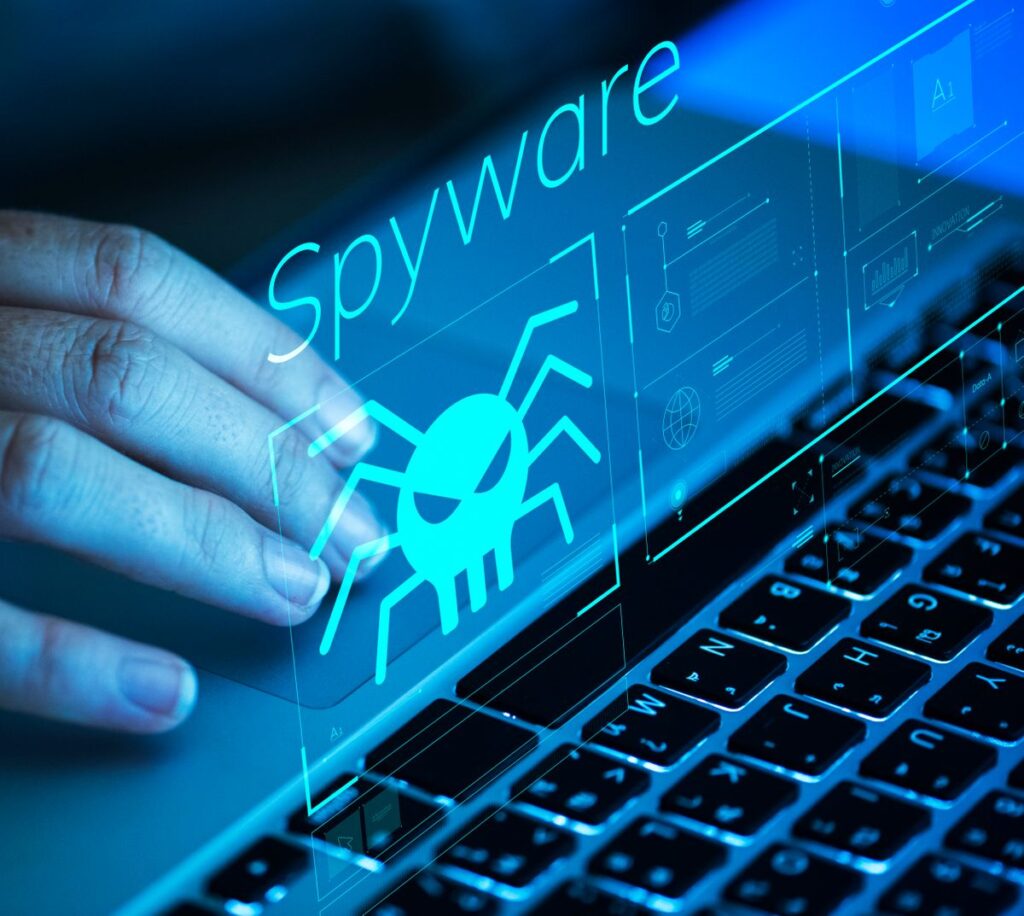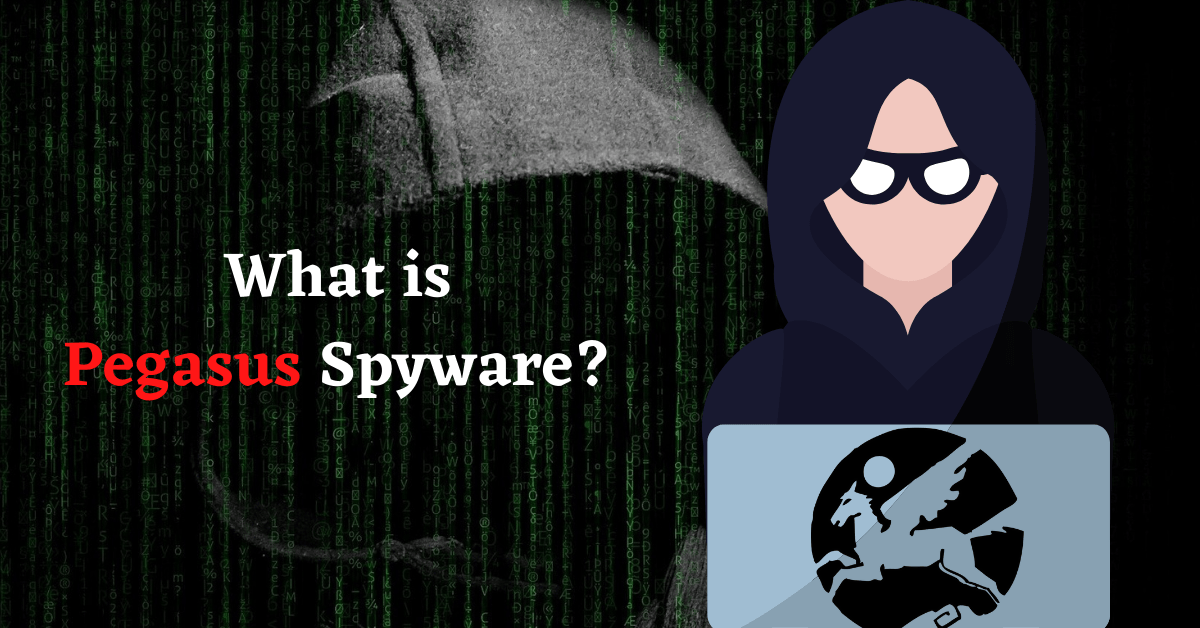Last Updated on August 31, 2024 by Tech Queries Team
In an era where digital security is more important than ever, understanding the threats posed by spyware is crucial. One of the most sophisticated forms of spyware, Pegasus, has garnered significant attention due to its advanced capabilities.
This article will explore what is Pegasus Spyware, how it works, how to detect Pegasus spyware, and how you can protect your devices from this and similar threats.
Disclaimer: This article is intended solely for educational purposes, providing technical information to users about the malware known as Pegasus Spyware. All information has been gathered from various sources, and there is no intent to target any organization or individual.
Table of Contents
What is a Spyware?
Before diving into the specifics of the most dangerous Spyware, it’s essential to understand what Spyware is and how it operates.
As the name suggests, Spy-ware is a Spying Malware (a type of Malware) designed to Spy on your activities and gather confidential information.
This information can include photos, videos, contacts, conversations, call recordings, business details, and financial data. Additionally, Spyware can activate your device’s microphone and camera without your knowledge, allowing hackers to capture data discreetly. Hackers can also use Spyware to track your location and record your calls.
While common types of Spyware can often be detected and removed with antivirus software, there are more sophisticated and dangerous varieties, such as Pegasus, which we will explore in the following section.

What is Pegasus Spyware?
Definition and General Overview:
Pegasus Spyware is a form of malicious software designed to infiltrate devices and monitor user activity without their knowledge. Developed by Group named NSO, a technology company specializing in cyber surveillance tools, Pegasus has been identified as one of the most advanced spyware tools in existence.
Origin and Development
Originally created as a tool for law enforcement and intelligence agencies to combat crime and terrorism, Pegasus has raised concerns due to its potential for misuse.
The spyware operates by exploiting vulnerabilities in devices’ operating systems, allowing it to gain access to a wide range of data, including messages, emails, photos, and even the microphone and camera.
How Does Pegasus Spyware Work?
Mechanisms and Techniques
Pegasus Spyware is capable of infiltrating devices through various methods, including spear-phishing and zero-click exploits. Once installed, it operates silently, collecting data and sending it back to the attacker without the user’s knowledge. The spyware can access nearly all data on the device, making it a powerful tool for surveillance.

What is meant by “Zero-Click Exploits?
“Zero-click exploits” are cyber attacks where malware is installed on a device without any user interaction. They exploit vulnerabilities in software or operating systems to deliver malware automatically.
Unlike traditional attacks that require a user to click on a link or download a file, zero-click exploits work remotely by triggering flaws in the software, making them harder to detect.
For example, Pegasus Spyware uses zero-click exploits to install itself on a device without the user’s knowledge.
Impact on Infected Devices
When a device is infected with Pegasus, the spyware can monitor almost every aspect of the user’s activity. This includes reading messages, tracking calls, capturing screenshots, and even activating the device’s microphone and camera to record conversations and surroundings. The extensive capabilities of Pegasus make it a significant threat to privacy.
Why is Pegasus Spyware Dangerous?
Unlike other types of malware, such as Spyware, Botnet, and Trojan, which typically require some form of user action to infect a device (like downloading files from untrusted sources or clicking on phishing links), Pegasus Spyware operates differently. It does not rely on user actions to gain access. Instead, Pegasus targets vulnerabilities in the software installed on a device, exploiting these weaknesses to gain unauthorized access.
What makes Pegasus particularly dangerous is its stealth: users are often unaware that their device has been compromised. This allows the spyware to operate undetected, making it even more challenging to identify and remove.
Additionally, Pegasus Software is capable of self-destructing to avoid detection. It is specifically designed to target smartphones, including both Android and iPhones. Pegasus operates at the kernel level of the device, which grants it access to settings and areas typically restricted from user interaction. Another type of malware that similarly attacks the kernel level is Rootkit.
Check out more about What is a Rootkit? Why is it the most dangerous type of Virus?

How to Detect Pegasus Spyware?
Signs and Symptoms
Detecting Pegasus Software can be challenging due to its stealthy nature. However, there are some signs that may indicate an infection, such as unexplained battery drain, increased data usage, or the device overheating without apparent cause.
Detection Tools and Methods
To detect Pegasus Spyware, specialized forensic tools like Amnesty International’s Mobile Verification Toolkit (MVT) can be used. These tools analyze device logs and metadata for indicators of compromise. For iPhone users, monitoring for unusual behavior and regularly updating iOS can help mitigate the risk of infection.
How to Remove Pegasus Spyware?
Removing Pegasus Spyware from a device requires a comprehensive approach.
Recommended Tools for Removal
Several anti-spyware tools are available that can help identify and remove spyware, including Pegasus. Look for reputable security software that specializes in detecting advanced threats and ensure it is regularly updated.
How to Remove Pegasus Spyware from iPhone
Backup Your Data: Ensure all important data is backed up to iCloud or another secure location.
Factory Reset: Perform a factory reset to wipe all data and reinstall the operating system:
Go to Settings > General > Reset > Erase All Content and Settings.
Follow the prompts to complete the reset. This removes Pegasus Spyware but also all other data, so ensure your backup is complete.
Update iOS: After resetting, immediately update to the latest iOS version:
Go to Settings > General > Software Update.
Restore from Backup: If desired, restore your data from the backup made before the reset.
Monitor for Issues: Keep an eye out for any unusual behavior and consider using security tools like Amnesty International’s Mobile Verification Toolkit (MVT) for additional checks.
How to Remove Pegasus Spyware from Android
Backup Your Data: Back up your important data to Google Drive or another secure location.
Factory Reset: Perform a factory reset to remove Pegasus Spyware:
Go to Settings > System > Reset options > Erase all data (factory reset).
Confirm and follow the prompts to complete the process.
Update Software: Ensure your device is running the latest Android version:
Go to Settings > System > System update.
Restore from Backup: Restore your data from the backup made before the reset.
Install Security Software: Use reputable security software to scan for any remaining threats and prevent future infections.
Monitor Device: Watch for any unusual activity and regularly update your security settings and software.
Pegasus Spyware and Email Security
Risks Associated with Email
Pegasus Spyware can potentially exploit vulnerabilities in email systems, especially through spear-phishing attacks. These attacks trick users into clicking malicious links or opening infected attachments, leading to spyware installation.
Best Practices for Email Security
To protect your email accounts, avoid clicking on unknown links or downloading attachments from untrusted sources. Enable two-factor authentication (2FA) on your email accounts, and use a strong, unique password to reduce the risk of unauthorized access.
Preventive Measures
General Cybersecurity Best Practices
Protecting your device from Pegasus Spyware and similar threats involves adopting strong cybersecurity habits. Regularly update your operating system and applications, avoid downloading apps from unofficial sources, and be cautious of phishing attempts.
Specific Recommendations for Pegasus Spyware
Given the advanced nature of Pegasus, it is crucial to use security software designed to detect and block sophisticated threats. Regularly check for system updates, as these often contain patches for known vulnerabilities that Pegasus could exploit.

Frequently Asked Questions:
How to Detect Pegasus Spyware on iPhone?
To detect Pegasus on an iPhone, use tools like Amnesty International’s Mobile Verification Toolkit (MVT) and monitor for signs such as unusual battery drain or data usage.
Is Pegasus Spyware a Virus?
No, Pegasus is not a virus. It is a type of spyware, specifically designed for surveillance rather than spreading between devices.
What Makes Pegasus Spyware Different from Other Malware?
Pegasus stands out due to its advanced capabilities, including the ability to perform zero-click attacks, where no user interaction is required for the spyware to be installed.
How Can I Protect My Android Device from Pegasus Spyware?
To protect your Android device, keep your software updated, use reliable security software, and avoid downloading apps from unknown sources.
Can Pegasus Spyware Spread Through Email?
While Pegasus itself does not spread via email, phishing emails can be used to trick users into installing it by exploiting vulnerabilities in the device’s software.
Conclusion on Pegasus Malware:
Pegasus Spyware represents a significant threat to digital security, but by understanding what is Pegasus Spyware, how it works, and how to detect & protect against it, users can take steps to safeguard their devices.
Unlike conventional malware, Pegasus evades detection by standard antivirus software due to its advanced nature.
Staying informed about the latest cybersecurity practices and maintaining a cautious approach to online activities are key to preventing spyware infections.

